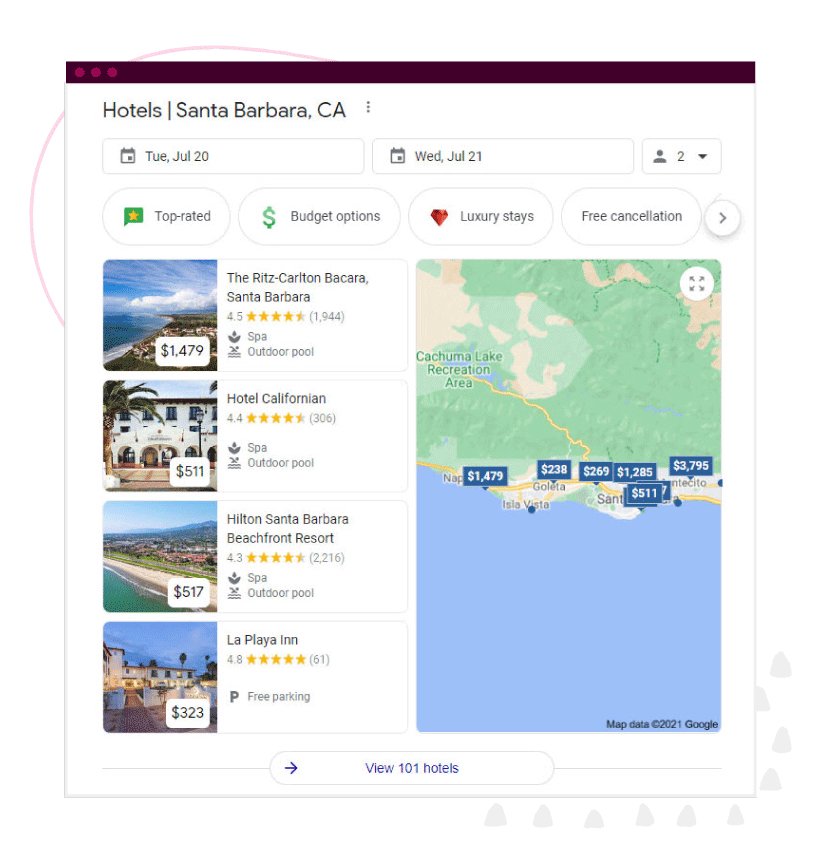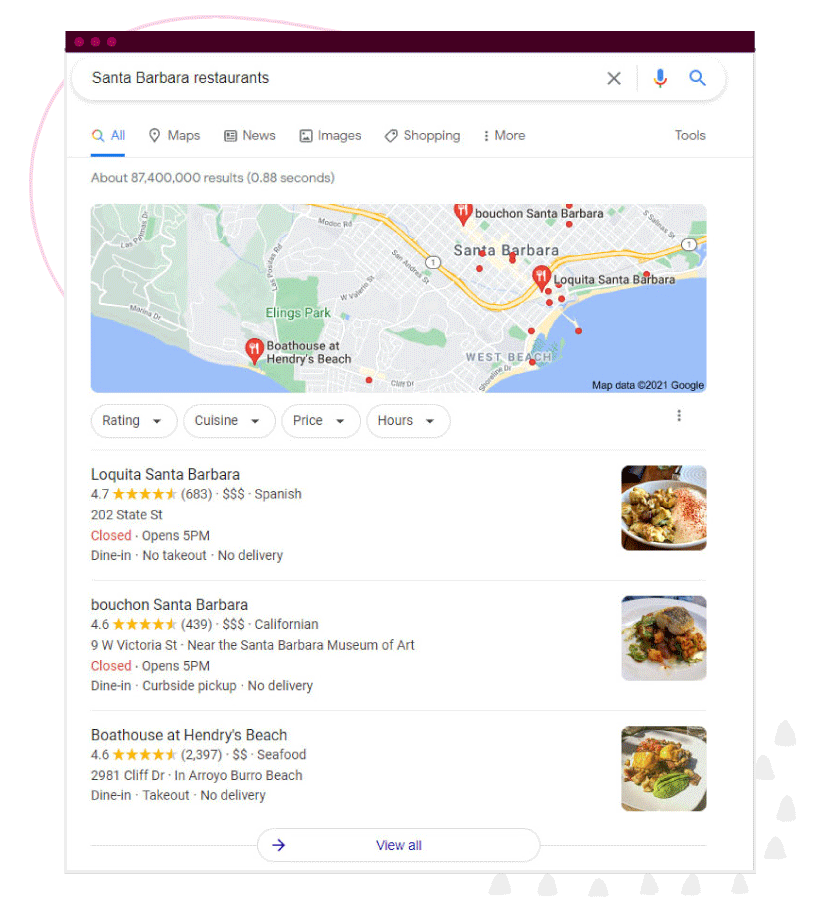What are Google local packs? Google local packs are groups of local business listings, complete with approximate maps, that appear in response to your need for a local product or service.
Have you ever been hungry and decided not to cook? You might head to your laptop or smartphone and type “restaurants near me” in the search engine. What you’ll find are three restaurant listings that are, well, near you. Welcome to the world of Google’s local packs.
These packs are groups of local business listings, complete with approximate maps, that appear in response to your need for a local product or service. Once known as “seven-packs,” the listing has been reduced to three businesses (four for hotel searches). So, rather than providing a lengthy list of many restaurants for you to peruse, both local packs and their cousins – local teaser packs – provide a handy list of businesses that are ranked by the following.
Relevance
Google will place a business in a local pack/local teaser pack based on how closely a particular company’s profile matches what you’re looking for. If you’re looking for a restaurant, this is what will appear in the local pack/local teaser pack. If you narrow this down to “fine dining,” then the packs will provide local packs to match this relevance.
Distance
Google scopes out – and shows you – businesses that are closest to the location from which you are initiating the search. If your query is for “restaurants near X hotel in Santa Barbara,” then the results displayed in that pack will be the nearest restaurants, whether they’re fast-casual or fine dining.
Prominence
Ever wondered why chain businesses might be common in local packs and local teaser packs? It’s because they’re better known than their local counterparts. This doesn’t mean that these are necessarily the best businesses. Google ranks them because there is more information on them.
Google local packs example
Local packs are generated primarily to help users find locations where they can buy products and services. When you input “Santa Barbara restaurants” into a Google search engine, you’ll find addresses, hours of operation, and whether you can dine in or take out. This is the basic information that pops up based on your particular search query.

Local teaser packs generate information that might go above and beyond what is offered through the local packs. If you were to google “Santa Barbara hotels,” you’d find the following local teaser pack.

The above local teaser pack is full of information, such as price, customer rankings, and amenities. These amenities might include free parking, a spa or outdoor pool, and Wi-Fi. This also gives you the option to search within a specific parameter, such as dates during which you might want to stay in one of these hotels.
Attributes Google packs provide
Local packs and local teaser packs are similar — they provide the name of geographically relevant businesses and a convenient map to give you a visual clue. However, these two differ.
Local packs provide business names and addresses; some might provide hours of operation. But that’s all local packs will provide. You obtain enough information to know how far a certain business is from the location you specify.
Local teaser packs go a little more in-depth. While they don’t list addresses, they will offer features; you’ll find out how close the business in question might be to you by looking at the adjacent (or above) map. As indicated above, the Santa Barbara hotels in the local teaser pack offer various amenities. Sometimes, depending on the algorithms or what else Google might pick up, you could find a snippet of a review, as well.
What type of content is used for local packs and local teaser packs?
As is the case with many Google SERP widgets, content that is funneled into local packs and local teaser packs comes from other parts of the internet.
These sources can include:
- Google My Business. This feature allows businesses to control how they appear on Google by offering them the opportunity to promote what they do and where they are on Google Search and Google Maps, respectively.
- Yelp, TripAdvisor, or other review sites. Google’s web crawlers find – and pull – information that is appropriate to a particular search query and displays that information in its search engine packs.
- Organization schemas. Schemas consist of codes and microdata inserted into business websites. This information, in turn, is used to help search engines more effectively pinpoint and use the right data for search queries.
Ways in which businesses can rank in local packs/local teaser packs include:
- Optimizing the Google My Business Listing (including adding photos)
- Ensuring correct NAP (name, address, phone) listings
- Encouraging and responding to reviews
- Building a social media presence
- Developing consistent, ongoing content, such as blogs
Local packs and local teaser packs can help businesses jump to the top of rankings. Knowledge and proper use of this tool can help improve rankings on a SERP, ultimately helping to drive more traffic to a business website and ultimately, its location.



